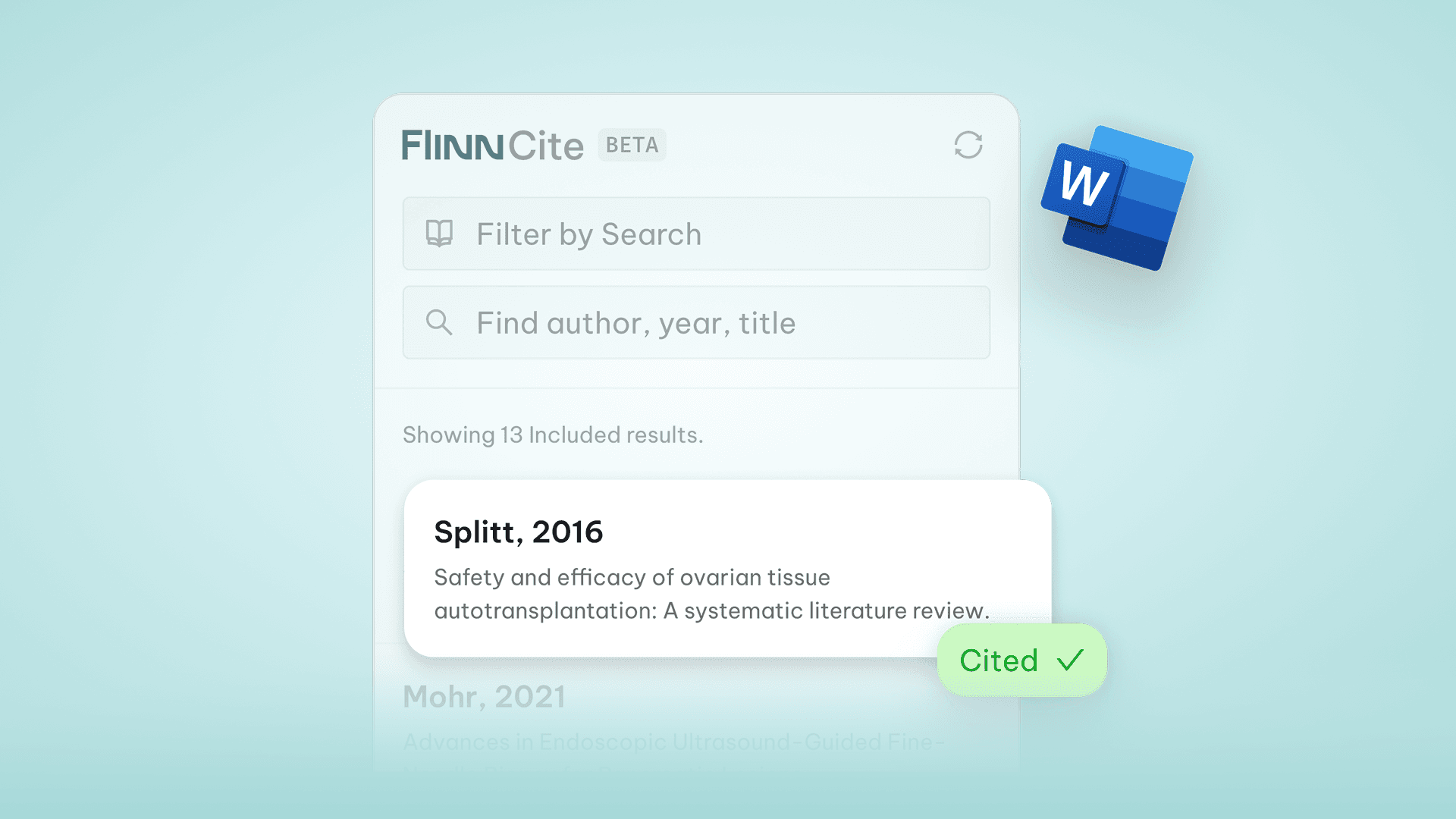Literature
6 Min.
Google Scholar in MedTech: Mastering CER & PMCF Searches

Aline Frick
May 30, 2025
To say that navigating scientific literature is overwhelming would be an understatement, especially when you're expected to meet strict regulatory requirements, compile Clinical Evaluation Reports (CERs), and conduct ongoing Post-Market Clinical Follow-up (PMCF). For professionals in regulated industries like medical devices, finding reliable, up-to-date, and device-specific evidence efficiently is a constant challenge.
While structured databases like PubMed and Embase are go-to tools for many, Google Scholar often flies under the radar due to its lack of transparency and limited filtering options. But with the right strategy (and a little help from Flinn!) Google Scholar can become an unexpectedly efficient tool, especially when you're searching for device-specific performance and safety data buried deep in full-text publications.
Why Google Scholar Matters for MedTech
You might be wondering:
With so many alternatives out there, why bother with Google Scholar at all?
Well, unlike traditional academic databases, Google Scholar is a search engine, and that’s exactly its strength. It casts a wide net across scholarly literature, indexing not only peer-reviewed papers but also theses, books, abstracts, technical reports, and other grey literature from a variety of disciplines. In other words: if it’s out there and even remotely academic, Google Scholar will probably find it.
That broad reach makes Google Scholar incredibly useful, but also incredibly noisy. Its strength is also its biggest weakness: because there’s no transparent curation, inclusion criteria, or quality control, search results often mix gold-standard evidence with outdated PDFs, inaccessible paywalls, and off-topic citations. Especially in MedTech, that kind of ambiguity isn’t just frustrating, it can be a compliance risk.
A quick summary of what we broke down:

That’s why using Google Scholar effectively requires a different way of thinking than using PubMed or Embase. And that’s exactly where Flinn comes in – but before we dive into the specifics, let’s look at how Google Scholar compares to other databases.
To use Google Scholar effectively, it’s important to understand how it differs from more structured platforms like PubMed and PubMed Central (PMC). Here's a side-by-side to show you what sets them apart:

Key Insights for Effective Use
So, what does this chart mean in practice?
If there’s one thing to remember about Google Scholar, it’s this: don’t treat it like PubMed. Start with a mindset shift, because it plays by different rules and mastering those can make or break your search results.
Here’s what we recommend:
Keep it simple.
Rethink your strategy, because Google Scholar doesn’t handle complex Boolean logic well. Skip the parentheses and long operators. Use short, targeted keywords: think device name, manufacturer, model number.Be strategic with date ranges.
Wide time frames often surface outdated but highly cited publications. Unless your query is extremely specific, narrow your date range to keep results current.Use it where it shines.
Google Scholar is especially useful when you’re looking for detailed, real-world evidence: post-market performance data, device brand mentions, or information tucked away in full-text documents. This is where traditional databases often fall short.
How Flinn Enhances Your Google Scholar Experience
Instead of switching between browser tabs, copy-pasting between documents, and second-guessing your results, Flinn gives you a unified, structured view. The result? Fewer blind spots, less manual effort, and a much smoother workflow for your entire team.

What You Can Do Today
Shift your mindset: Don’t treat Google Scholar like PubMed. Use short, clean queries and think device-first.
Audit your current approach: Are your team’s search habits efficient, or are they leading to tool fatigue and rework?
Use Flinn’s Google Scholar integration: Let the platform curate, filter, and deliver only the results that matter.
Explore subqueries in Flinn: Build distinct queries for Google Scholar instead of blending them with structured database logic.
Conclusion: Google Scholar, Reimagined
Google Scholar may lack the structured search capabilities of databases like PubMed, but its ability to search full texts makes it uniquely valuable for uncovering device-specific data in PMCF and safety-related research.
With the right approach, and with Flinn by your side, it becomes far more than a noisy search engine. It evolves into a curated, compliance-ready companion that helps you save time, reduce complexity, and improve the quality of your submissions. Whether you're compiling a Clinical Evaluation Report or tracking post-market performance, Flinn turns search into strategy (and noise into insight!).
Curious to see how it works?
We’d be happy to walk you through it. Let's talk!














